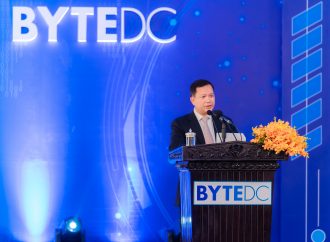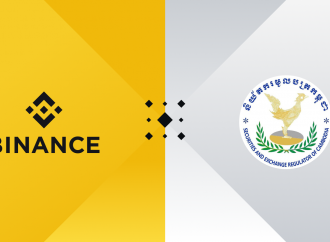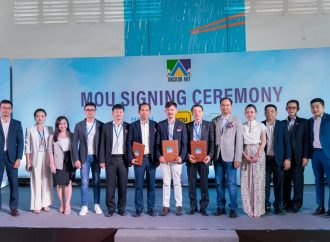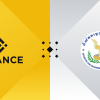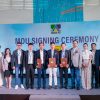Developments in urban planning and real estate have introduced new ways to city-living.
Developments in urban planning and real estate have introduced new ways to city-living that alleviate problems faced in urban metropolises today. Riding this wave of urban regeneration, mixed-use developments have increased in popularity.
According to figures from research by the World Health Organisation, the global urban population will be growing at a rate of 1.63% per year, over the next half a decade. From 2020 to 2025, already-packed cities all over the world will only continue to see further growth and increase in density.
What will the way forward look like?
Urbanisation has brought along big changes across categories of the social, economic and environmental. Some of these changes have not been for the better.
As we venture further into the uncharted waters of the twenty-first century, more and more are people realising the need to adjust our current models of urbanisation, and to positively transform what it means to lead a city life.
Cities of the future: The Rise of Smart Cities
Cities are identifying ways to pivot towards becoming “Smart Cities”. These are cities that leverage on state-of-the-art technology to improve citizens’ quality of life. In brief, building smart cities consist of:
(a) improving urban infrastructure such as waste management and water drainage systems;
(b) working towards greater environment-friendliness;
(c) enhancing social ties within the community; and
(d) increasing the economic growth of the city.
Within urban planning efforts to achieve these four goals, a trend towards building Mixed-use developments has emerged.
The Advantages of Mixed Use Developments
These projects are integrated hubs combining commercial, retail, leisure, and/or residential facilities, which thus offer people the opportunity to live, shop, work and play – all within walking distance.
Bringing a wealth of social benefits
It takes more than skyscrapers to build a neighbourhood. Instrumental in shaping community ties within a city are the existence of public spaces. These spaces create opportunities for people to get acquainted with and interact with each other, exchange ideas, and form deeper ties.
As a complement to the multiple types of functional spaces, mixed-use developments design and incorporate common spaces into the compound. This attracts foot traffic, and hence encourages residents to immerse themselves in the community, thus more clearly forming the identity of the residential area.
In Phnom Penh City Center(PPCC), the brand new Global Tech Exchange (G-TECH) is set to sit close to over 22,000 square meters of public green space in the proposed Central Park. Within the wider ecosystem of the PPCC integrated township, spaces such as a sports complex feature too, offering more opportunities for workers and PPCC residents within the compound to meet.
Going easier on the environment
A hallmark experience of late twentieth-century to present day city life is commuting to work. Closely associated experiences would be that of waiting in traffic jams, and travelling down car-clogged, fumes-filled roads.
Clear zoning practices in cities meant that residential apartments were a drive away from office skyscrapers, and this translates into a two-fold financial and environmental cost of the daily commute.
The rise of mixed-use development options in cities mean that for more and more people, the daily commute can be tremendously shortened. With residential, professional, and recreational spaces in such close proximity to one another, people are less dependent on automobiles. Residents living in the mixed-use development compound now have the luxury of alternatives such as walking or biking to work or the shops.
Some mixed-use developments’ commitment to sustainability go further than this, taking this to the level of infrastructure. In the case of Phnom Penh’s Global Tech Exchange (G-TECH), smart and green features are fitted into the project’s street lights and buildings in order to ensure maximum eco-friendliness.
Reaping economic benefits
With a combination of retail outlets, offices, leisure and residential buildings all within the same compound, these four spaces mutually benefit one another, stimulating economic growth.
Companies which set up headquarters within the development would provide jobs to the local community, and local residents within the area would patronise the F&B outlets and retail stores of the malls. A mixed-use development in a prime location with strong retail offering would also consequently be appealing to potential home buyers, investors, and office tenants.
Unlike single-use residential projects, mixed-use developments stand out in their blending of multiple work and play facilities, among other bonuses such as increased security and ultra-modern, eco-friendly project features.
These serve to bump up the property value, making it an attractive option to well-heeled environmentally-conscious buyers who at the same time value convenience and a seamless work-life balance. For investors looking to rent out residential units, leasing homes nested in mixed use developments fetches a good rental value.
About Phnom Penh City Center (PPCC) and the Global Tech Exchange (G-TECH)
The Global Tech Exchange is a brand new mixed-use development, situated in the heart of Phnom Penh, Cambodia’s capital city. Designed by international architecture firm AEDAS, it is developed by Cambodian real-estate developer Shukaku, and Singaporean developer Kingsland Global.
The ultra-modern project will consist of two office towers, a data center, two retail floors, and a hotel tower. Slated for opening in 2022, the G-TECH development has already attracted the attention of big names to come on board.
To date, leading financial services company Prudential has confirmed anchor tenancy of Office Tower 1. Global award-winning hotel chain Hilton Hotel Group is set to helm the hotel tower, marking the hotel chain’s Cambodian debut.
The project sits in the unparalleled prime location of Phnom Penh City Center (PPCC), the city’s first and only Central Business District. The 111.6 hectare PPCC will transform the city’s landscape into a modern and eco-friendly, residential, commercial and leisure hub.
At a glance, the PPCC will be host to over 10,000 homes and 83,000 square metres of office space. By 2025, the new PPCC is projected to be home to over 56,000 residents, and visited by more than 190,000 people daily.


